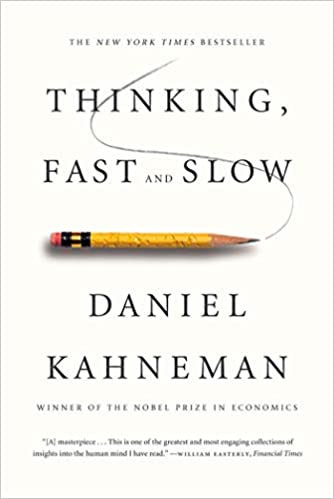A Mind-Bending Approach to Thought
What is 2+2? The answer that comes immediately to mind is, of course, 4. What is 17 x 24? We can arrive at the answer, but only after a little work. In our minds, writes psychologist and former Princeton University professor Daniel Kahneman in Thinking, Fast and Slow, there are always two systems at work. System 1 is an intuitive-based ‘automatic’ system that can be summarized as fast thinking. System 2 is an ‘effortful’ system — a slow-thinking system that requires an effort (and some time) for us to arrive at the answer.
While these two systems would seem to be well-designed for dealing with the world, in truth, writes Kahneman, the systems create some problems. The reason is that system 1 kicks in when system 2 is more appropriate — or, to put it another way, our trusted intuition can lead us to the wrong answers and the wrong conclusions.
What’s So Bad About Our Minds?
Steve is mild-mannered and detail-oriented. Is Steve more likely a librarian or a farmer? Most people would answer librarian, and they would be wrong. The mistake, as Kahneman explains, comes from the caricature of a male librarian (mild and detail-oriented) that we carry in our minds. In truth, as there are a far greater number of men who are farmers, there are more mild-mannered Steves on tractors than behind circulation desks.
Our biases and ‘heuristics’ — the technical term for ‘rules of thumb’ — can cause us to jump to conclusions, right or wrong. ‘Librarians are mild-mannered’ is a heuristic and leads us to the wrong answer. System 2 thinking will be more accurate in many situations, but as Kahneman notes, we think slowly when we are stumped and don’t have a fast answer to jump to — such as when faced with the problem 17 x 24.When an answer easily presents itself to us (‘Steve is more likely a librarian’), we rarely take the time to second-guess our intuition. Thus, we make erroneous decisions and draw erroneous conclusions based on shortcuts we didn’t even realize existed.
For example, Kahneman writes, most people believe they have an informed, objective opinion about which are the most important issues facing their nation. In truth, research has shown that people decide which issues are most important based on media coverage. The reason is the ‘availability heuristic’ — the rule of thumb that people attach importance to events that are easily retrieved from memory, in other words, readily available (rather than buried in distant memory). How do those events become available? The answer, of course, is media coverage.
Priming is another phenomenon that can affect our decisions without our knowledge. A person who’s recently heard the word ‘food,’ for example, will be ‘primed’ to complete the word SO_P as SOUP and not SOAP. Priming is the reason that ballot questions concerning funding for education get far more support from people who vote in polling stations located in schools.
The Marvels of the Mind
Of course, fast thinking is not always wrong — and in many cases it’s necessary. As Kahneman explains, recent developments in cognitive and social psychology have also revealed the marvels of intuitive thinking. Kahneman is not arguing that we are making wrong decisions consistently, only that we are far less rational than we believe ourselves to be.
Thinking, Fast and Slow will have readers looking at the world around them, and at their own decisions and opinions, much differently. This is not a fast book to read, however — nor should it be. There is too much to be savored.
______________________________________________________________________________
Soundview subscribers get quick-read/quick-listen summaries of the key concepts in best-selling business books (like Thinking, Fast and Slow) delivered to them every week! Take your career to new heights by staying up-to-date with the trends and ideas affecting business leaders around the globe.





